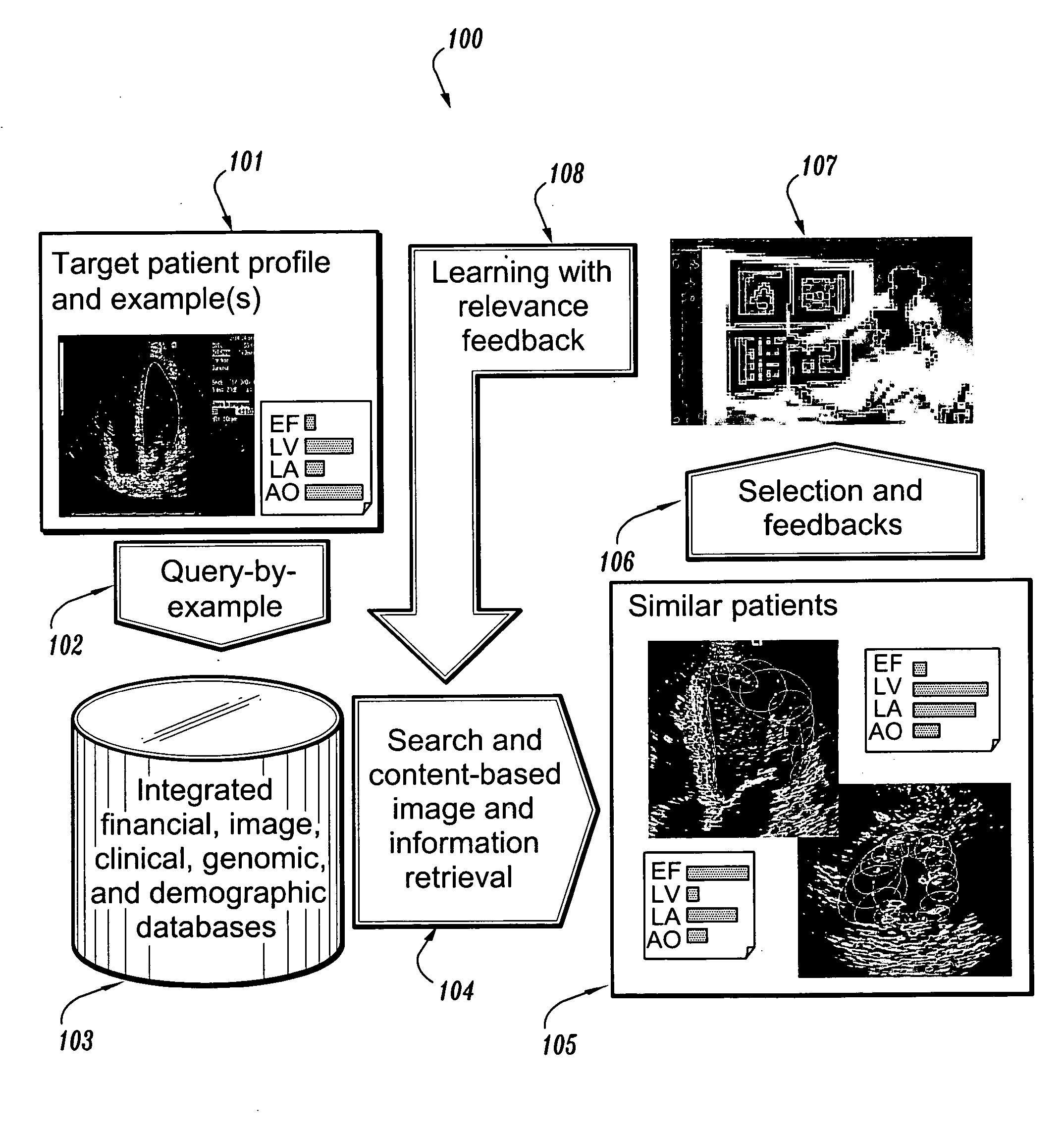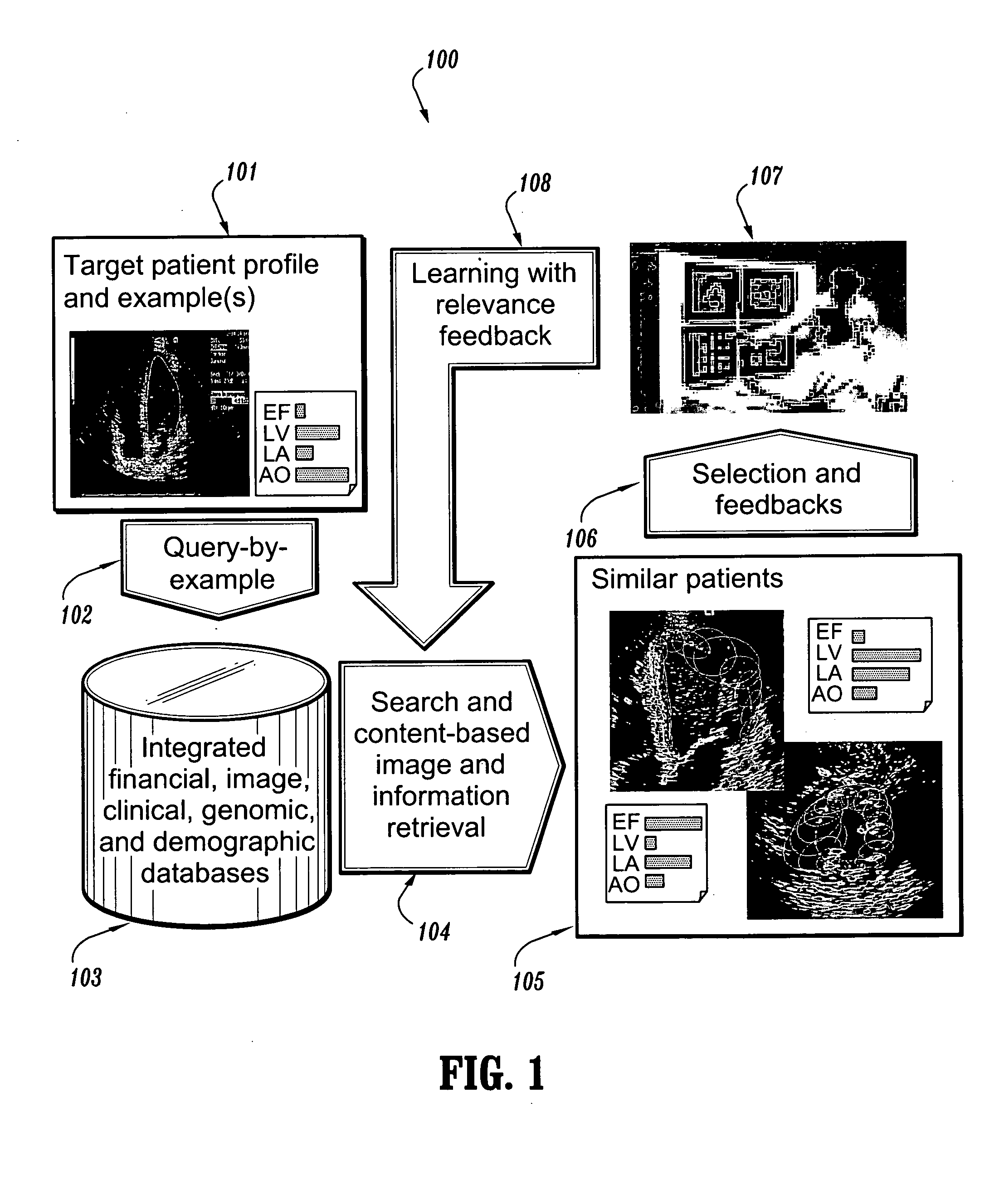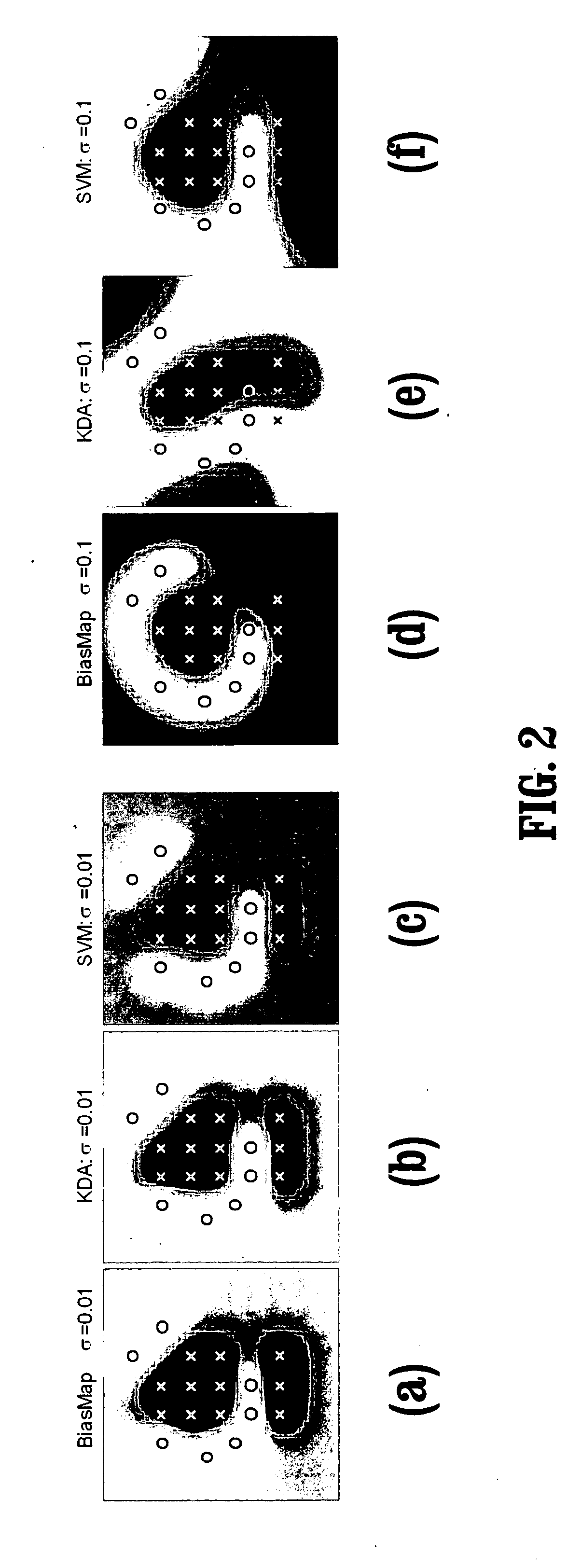System and method for patient identification for clinical trials using content-based retrieval and learning
- Summary
- Abstract
- Description
- Claims
- Application Information
AI Technical Summary
Benefits of technology
Problems solved by technology
Method used
Image
Examples
Embodiment Construction
[0024] Exemplary embodiments of the invention as described herein generally include systems and methods for patient identification for clinical trials using content-based retrieval and learning. In the interest of clarity, not all features of an actual implementation which are well known to those of skill in the art are described in detail herein.
[0025] A content-based retrieval and learning system according to an embodiment of the invention can provide an automatic patient identification that incorporates knowledge and intelligence. By intelligence is meant the use of machine learning, image processing, and computer vision algorithms for feature extraction from genomic data, images, or image sequences, so that evaluations of non-numerical and non-categorical information sources can be analyzed by machines. By knowledge is meant the use of AI and machine learning tools for extracting quantitative dependencies among different data modalities and disease categories, either from the d...
PUM
 Login to View More
Login to View More Abstract
Description
Claims
Application Information
 Login to View More
Login to View More - R&D
- Intellectual Property
- Life Sciences
- Materials
- Tech Scout
- Unparalleled Data Quality
- Higher Quality Content
- 60% Fewer Hallucinations
Browse by: Latest US Patents, China's latest patents, Technical Efficacy Thesaurus, Application Domain, Technology Topic, Popular Technical Reports.
© 2025 PatSnap. All rights reserved.Legal|Privacy policy|Modern Slavery Act Transparency Statement|Sitemap|About US| Contact US: help@patsnap.com



